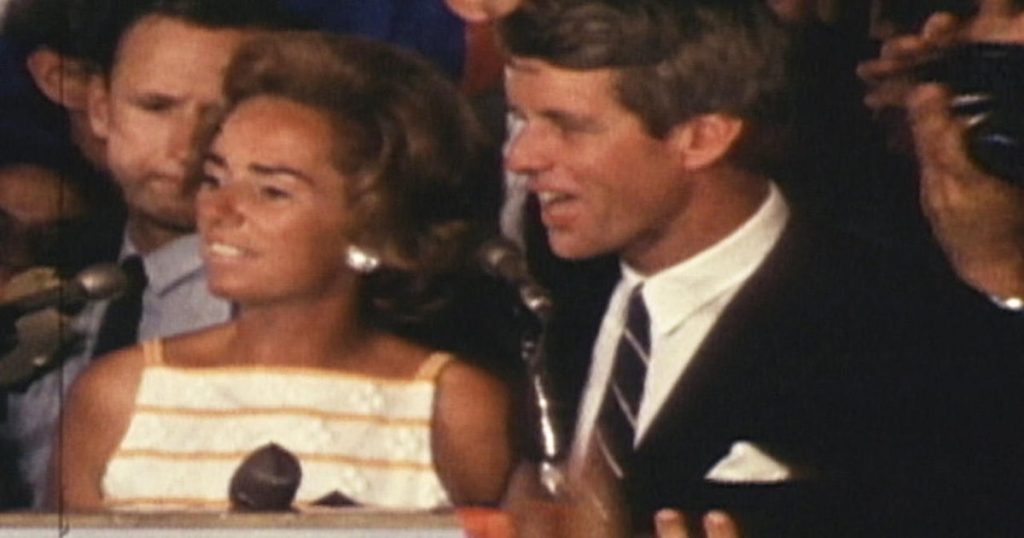In a groundbreaking move, the Trump administration has begun releasing approximately 10,000 pages of previously classified records related to the assassination of Democratic Senator Robert F. Kennedy, which occurred in 1968. This decision, encouraged by Robert F. Kennedy Jr., secretary of health and son of the late senator, aims to shed light on the investigation into his father’s tragic death as longstanding questions surrounding the circumstances of the assassination resurface. This release marks the initial batch in a broader effort to declassify extensive files related to several high-profile assassinations that still intrigue the public today.
| Article Subheadings |
|---|
| 1) Overview of the Document Release |
| 2) Implications of the Release on Current Investigations |
| 3) Context of the Assassination |
| 4) Public Reactions and Perspectives |
| 5) The Path Forward: Future Releases |
Overview of the Document Release
The declassification of documents surrounding Robert F. Kennedy’s assassination was initiated under President Trump as part of his administration’s promise of maximum transparency. On a recent Friday, Tulsi Gabbard, the Director of National Intelligence, confirmed that the endeavor to scan and upload these records was executed in close collaboration with the National Archives and other governmental agencies. This release not only encompasses memos and investigative files from the Justice Department and FBI but also includes photographs depicting evidence collected during the assassination investigation. The filtered files prioritize privacy by omitting sensitive data like Social Security numbers.
Implications of the Release on Current Investigations
The project considerably revives the discourse regarding the assassination and casts a new light on old evidence. According to experts, while the primary local investigation led by Los Angeles officials and supporting documents from the FBI have been scrutinized historically, the release of federal files introduces the possibility of unveiling fresh or previously unrecognized evidence. Some speculate whether recently uncovered files could corroborate or contradict existing narratives surrounding the incident. This renewed investigation could significantly impact public perception and ongoing discussions about justice for the victims and the implications surrounding their deaths.
Context of the Assassination
Senator Robert F. Kennedy was assassinated on June 5, 1968, at the Ambassador Hotel in Los Angeles, shortly after delivering a victory speech for the Democratic primary. The case quickly focused on Sirhan Sirhan, a 24-year-old Palestinian immigrant who was arrested at the scene and later convicted of murder. Although Sirhan has admitted responsibility for the assassination, many questions linger regarding the circumstances under which the assassination occurred, as inconsistencies with eyewitness accounts and physical evidence have fueled ongoing debate. The release of these documents may help address some of these uncertainties.
Public Reactions and Perspectives
Public response to the initial release has reflected a mix of skepticism and hope. Advocates, particularly among younger generations who have previously only heard narratives from the past, express enthusiasm for revisiting the details of the case. Conversely, skeptics warn against the potential for misinformation or misinterpretation of the evidence. Robert F. Kennedy Jr., who has long campaigned for a reexamination of his father’s assassination, expressed gratitude for the release and indicated that it highlights the importance of transparency regarding complex historical events.
The Path Forward: Future Releases
In addition to the 10,000 pages currently made available, prospects of further disclosures loom large. The Director of National Intelligence Tulsi Gabbard indicated that an additional 50,000 pages related to the investigation were identified in CIA and FBI file searches. These subsequent releases could potentially uncover more significant insights, reshaping narratives surrounding not only Robert F. Kennedy’s death but also that of other prominent figures, including Rev. Martin Luther King Jr. and John F. Kennedy, whose cases are also under review for confidentiality barriers. Investigators are currently working diligently to collaborate across government lines to ensure that the historical records are thoroughly vetted and appropriately released to the public.
| No. | Key Points |
|---|---|
| 1 | 10,000 pages of records on Robert F. Kennedy’s assassination released by the Trump administration. |
| 2 | Release comes after efforts led by the National Archives and other agency officials. |
| 3 | More than 50,000 additional documents are yet to be reviewed and potentially released. |
| 4 | Public responds with a mix of skepticism and anticipation regarding the historical implications. |
| 5 | Efforts continue to ensure transparency in upcoming disclosures related to other historic assassinations. |
Summary
The initial release of documents concerning the assassination of Robert F. Kennedy stands as a notable step towards transparency regarding a significant event in American history. With many unanswered questions and the potential for further revelations, both the government and the public approach this sensitive topic with cautious optimism. The implications of this release could set the tone for future investigations concerning other political assassinations, continuing to engage public interest in the search for truth and justice surrounding these historical figures.
Frequently Asked Questions
Question: What prompted the release of RFK files?
The decision to release the files stemmed from a directive by President Trump, who aimed to promote transparent historical investigations following his inauguration.
Question: Who is leading the declassification efforts?
The Director of National Intelligence, Tulsi Gabbard, is overseeing the declassification program, working closely with the National Archives and other agencies.
Question: What do experts hope to find in these documents?
Experts express hope that the documents could provide new insights or potentially clarify existing ambiguities regarding the circumstances surrounding RFK’s assassination.


